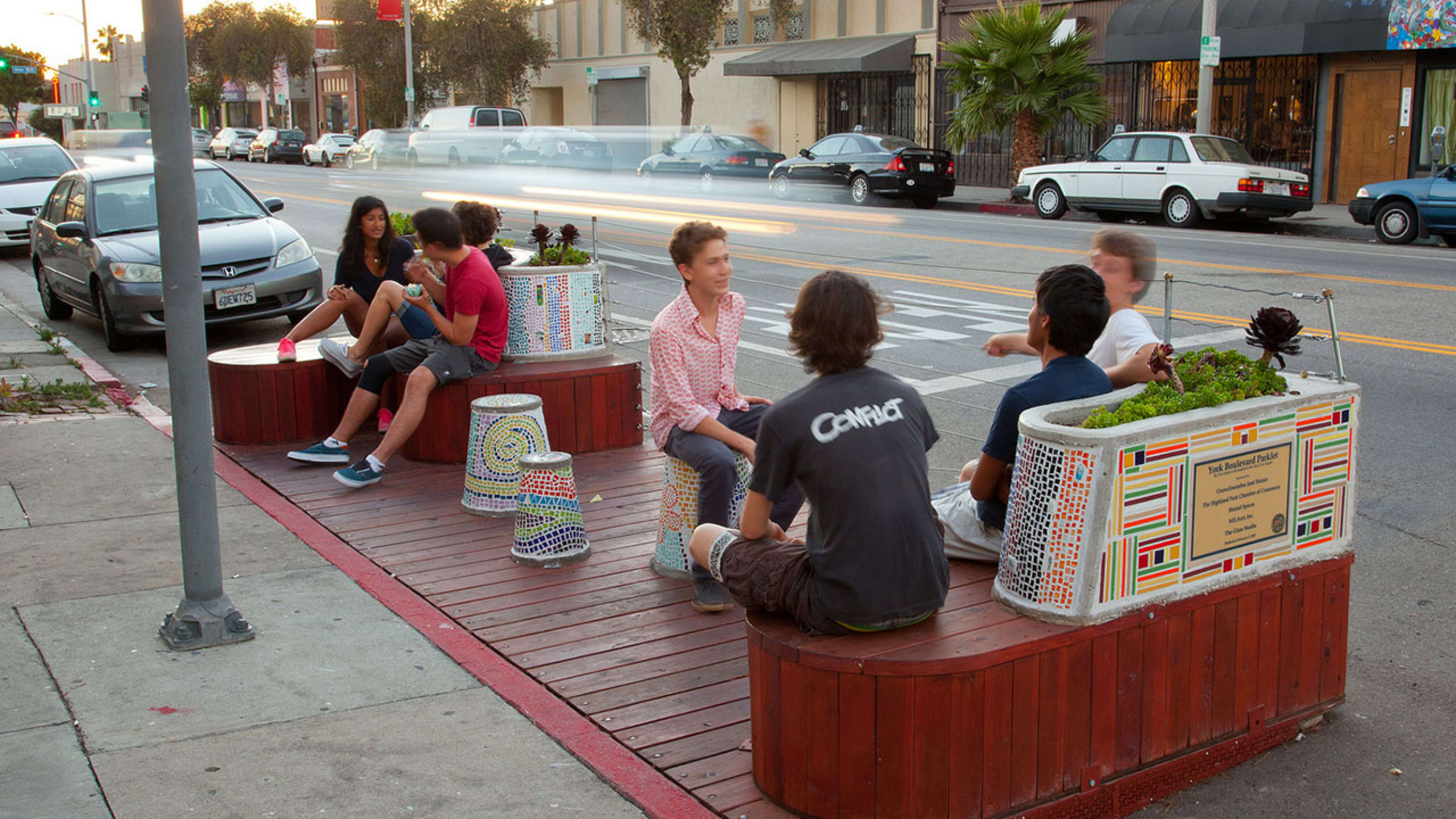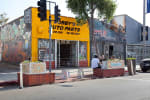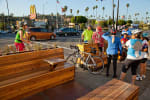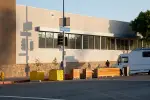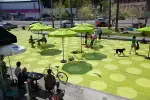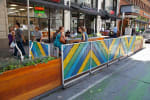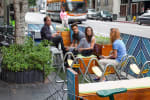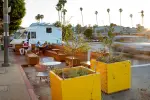Building a community parklet, like those that now line the sidewalks of cities across the country, usually means dealing with a lot of red tape. LA’s new People St program is making that easier with a DIY kit of parts for designing parklets, plazas, and bike corrals. Any group approved through the program can use the kit to quickly add new community space to a neighborhood.
“The main goal is to get projects on the ground as fast as possible,” says Valerie Watson, one of LA’s new pedestrian coordinators, who helped launch the program after the city realized it needed a better process for all of the people who suddenly wanted to work on local infrastructure. In 2012, in one council district alone, community groups proposed four different parklet projects, and each struggled separately to make it through the labyrinthine system.
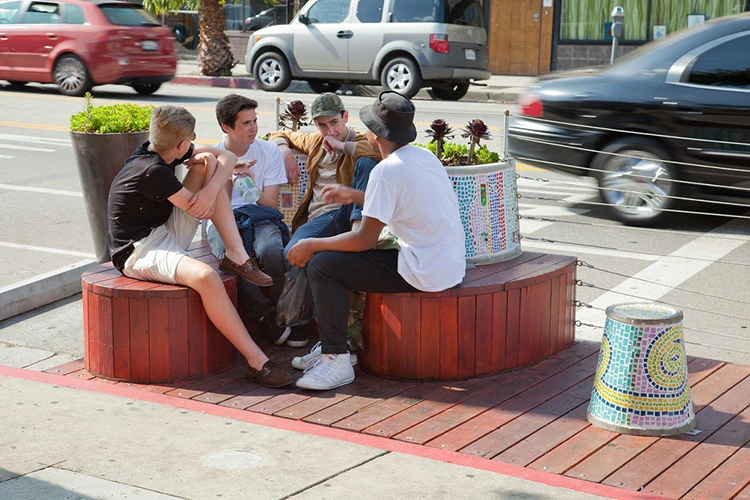
Now, things will be much simpler: After a group shows that there’s community support for a new project on a particular site and gets city approval, it can use the city’s pre-approved kit of designs to sail through the process.
For plazas–which in this case are painted sections of a street, blocked off with planters and filled with furniture–the kit includes choices of patterns and colors for the street and approved vendors for the chairs and tables. The LA Department of Transportation will also kick in some funding to help cover certain costs for four new plazas.

For parklets, which deal with complex construction issues of loads and safety, the kit is even more helpful. “Because we know that community groups don’t always have an architect in the house to help them with things like this, we hired architects to create different models of parklets that all address different design needs,” Watson says.
Groups will choose whichever design elements make the most sense for their own neighborhoods. “We’re really giving the power of planning and thinking about urban design to communities,” she says. “All of these neighborhoods have different needs, different urban design problems they’re trying to solve.”
The parklets and plazas aren’t necessarily intended to be permanent. After approval, they’ll be able to stay up for a year before they have to go through the approval process again. But Watson notes that a pilot plaza, installed in LA’s Silverlake neighborhood, has already proved to be so popular that the local council member is working to turn it into a park.
Ultimately, the city hopes that the projects will lead to more conversations about urban design in general.
“We’re kind of making a bet that by allowing community members to be in the driver’s seat on these projects, they’ll really spark bigger conversations about urban designs across the city–conversations about walkability, about safety for people walking, biking, and taking transit,” Watson says. “This can be the gateway to much bigger conversations that are sometimes difficult to find a venue to have.”
Recognize your brand’s excellence by applying to this year’s Brands That Matter Awards before the early-rate deadline, May 3.
